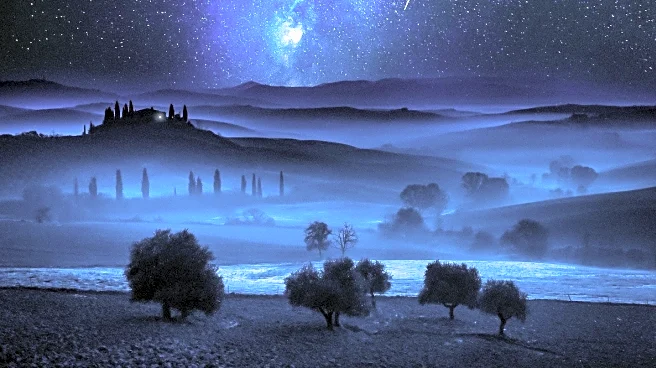What is the story about?
What's Happening?
The Perseid meteor shower is set to peak on August 12-13, 2025, offering a display of shooting stars and potential fireball sightings. This annual event occurs as Earth passes through debris from comet 109P/Swift-Tuttle. However, the peak coincides with a waning gibbous moon, which may obscure many of the meteors. Despite this, meteor enthusiasts are encouraged to seek dark sky locations to witness the spectacle. According to meteor expert Robert Lunsford from the American Meteor Society, the best viewing times are in the predawn hours of August 13, when up to 100 meteors per hour could be visible under ideal conditions. The Perseids are known for their impressive fireballs, and viewers can differentiate them from other meteors by their path originating from the constellation Perseus.
Why It's Important?
The Perseid meteor shower is one of the most anticipated astronomical events of the year, drawing interest from both amateur and professional astronomers. Its occurrence provides an opportunity for public engagement with astronomy and science education. The event's visibility, despite the moon's interference, highlights the importance of dark sky preservation for astronomical observations. The shower's timing also coincides with summer vacation periods, potentially boosting tourism in areas known for clear night skies. This event underscores the need for awareness about light pollution and its impact on natural phenomena visibility.
What's Next?
Meteor enthusiasts are advised to plan their viewing in locations with minimal light pollution and to use smartphone astronomy apps to locate the radiant point in the sky. As the moon's brightness diminishes in the following nights, viewing conditions may improve slightly, although the meteor rates will decrease. The American Meteor Society and NASA provide guidance on optimal viewing times and locations, encouraging public participation in skywatching events.
AI Generated Content
Do you find this article useful?











